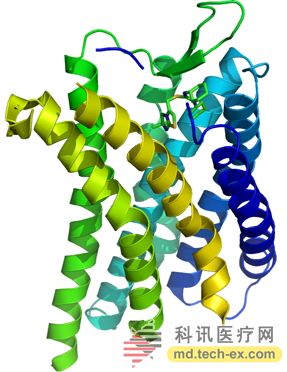Release date: 2015-07-30

CRISPR technology successfully edits T cells
The CRISPR-Cas9 system is a storm-like genomics field. It is called the third-generation gene editing technology. It easily combines and cleaves specific DNA sequences, inactivates genes, targets gene therapy to cure genetic diseases, and discovers the causes of diseases. Brought great hope.
Cas9 is an enzyme in the CRISPR system that performs DNA cleavage and insertion of new genetic sequences. Researchers usually use viruses or plasmids to introduce them into cells, and then in a separate step, will guide Cas9 to specific DNA. A single-guide RNA of the cleavage site is also placed in the cell.
Although researchers have achieved some success in shutting down genes by inserting or deleting random sequences, they have been unable to use CRISPR/Cas9 knock-in specific new sequences to correct mutations in T cells. The use of CRISPR/Cas9 to edit human T cells remains inefficient, and only a relatively small percentage of cells have been successfully engineered, and effective and specific editing of the human T cell genome remains a challenge.
Recently, a research project led by researchers at the University of California, San Francisco, designed a new strategy based on the genome editing system CRISPR/Cas9 to accurately transform human T cells, providing a study for T cell function research. A versatile new tool and a new way to develop CRISPR/Cas9-based therapies to treat many serious health problems.
Who will transform T cells?
In the field of CRISPR research, there are just a few big cows. Dr. Feng Zhang from MIT, George M. Church, a famous professor of genetics at Harvard Medical School, and CRISPR, who has been in lawsuit with Professor Zhang Feng. Goddess - Dr. Jennifer A. Doudna from the University of California, Berkeley.
The study was published in the July 27 issue of the Proceedings of the National Academy of Sciences (PNAS), co-author of postdoctoral research at Kathrin Schumann and Jennifer A. Doudna, a postdoctoral researcher at the Alexander Marson Laboratory at the University of California, San Francisco. Staff Steven Lin.
Why choose to transform T cells?
T lymphocytes are derived from pluripotent stem cells of bone marrow. During the embryonic and neonatal stages, some of the pluripotent stem cells or pre-T cells in the bone marrow migrate into the thymus and differentiate and mature under the induction of thymus hormone, becoming an immunologically active T. Cells play an important role in a wide range of diseases, from diabetes to AIDS to cancer. The chemokine receptor CXCR4 is a specific receptor for chemokine stromal cell-derived factor-1 (CXCL12) and an immunoreceptor on the surface of T cells, which has a strong chemotactic effect on immune cells.

3D map of CXCR4 protein
Because the genetic information can be easily and inexpensively edited in almost all organisms, the CRISPR/Cas9 system allows the public and scientists to be fascinated; T cells can be easily collected with the blood circulation, edited with CRISPR/Cas9, and then Returning to patients for therapeutic effects is an obvious candidate for implementing the medical application of CRISPR/Cas9 technology.
How to transform T cells?
The researchers successfully edited CXCR4 and PD-1 by simplifying the process of Cas9 and single-guide RNA into cells, and even knocked in new sequences to replace some of the specific genetic "letters" of these proteins, effectively and specifically Edited the DNA sequence of the CXCR4 receptor that makes HIV possible;
Subsequently, they deactivated the CXCR4 protein on the surface of T cells—HIV used this protein to infect T cells to cause AIDS; and sorted these cells with some markers expressed on the cell surface to help extract the available for research. And finally used for successful editing of cells for therapeutic purposes.
In addition, the research team has successfully shut down PD-1, a protein that has attracted the attention of many scientists in the emerging field of cancer immunotherapy. Studies have shown that using some drugs to block PD-1 can induce T cells. Attack the tumor.
How do the mentors view this research?
One of the authors of the paper, Schumann, said that for a long time, we have been trying to introduce Cas9 with plasmid or lentivirus and then express a single-RNA in the cell. The use of extracellularly generated RNPs makes the cell responsible for as little as possible of this process, which makes a big difference.
His mentor, Dr. Marson, added that it is quite difficult to edit the T cell genome with CRISPR/Cas9, and genome editing in human T cells is a significant challenge in this area. It took them a year and a half to try to optimize editing in functional T cells. Because of the many potential therapeutic uses, it is hoped that these basic research will be translated into scientific applications as soon as possible. He also stressed that although recent research reports on the editing of human embryos using CRISPR/Cas9 have caused great controversy, T cells are regenerated in each individual, so genetic transformation is not passed on to the next generation. He hopes that some Cas9-based therapies will be able to enter the clinical treatment of T cell-related diseases in the future, including some autoimmune diseases and immune defects such as "bubble boy".
Professor Jennifer A. Doudna said the research is an important step towards transforming the editing capabilities of CRISPR/Cas9 into human biology and medical applications.
Where is the research funding?
The research was supported by a joint project called the Innovative Genomics Initiative, led by Dr. Jennifer Doudna of the University of California at Berkeley and Dr. Jonathan Weissman, Professor of Cellular and Molecular Pharmacology at the University of California, San Francisco.
Doudna is a co-developer of CRISPR technology and has won the "Breakthrough Prize" for this technology and is a strong contender for CRISPR patents.
Source: Bio-Exploration
Ce/Fda Certification Kn95 Face Mask
Kid Non-Woven Fabrics Mask,Protective 4-Layer KN95 Face Mask,,Ce/Fda Certification Kn95 Face Mask
Dongguan Keyutai Mask Co., Ltd. , https://www.maskkytai.com